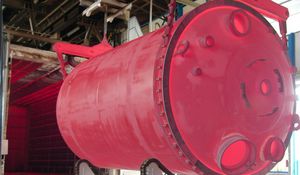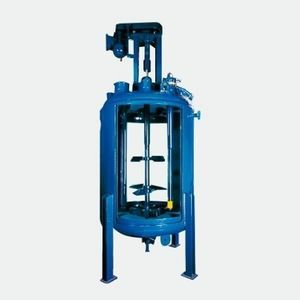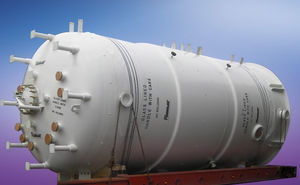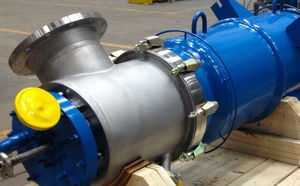
- Products
- Catalogs
- News & Trends
- Exhibitions
Sight glass for industrial applications Glasslook


Add to favorites
Compare this product
Characteristics
- Specifications
- for industrial applications
- DN
Max.: 200 mm
(7.9 in)Min.: 40 mm
(1.6 in)- Operating temperature
Max.: 230 °C
(446 °F)Min.: -60 °C
(-76 °F)- Operating pressure
Max.: 10 bar
(145 psi)Min.: 0 bar
(0 psi)
Description
Many processes, especially in pharma industries, are still visually driven. With Pfaudler PPG glass, an important step has been made towards good light reflection in the reactors. Visual process monitoring is then mostly achieved through two sight glasses, one with a lamp to inject light into the vessel, one for the operator’s insight.
Traditionally, sight glasses were manufactured according to DIN 28121 with a borosilicate glass disk fixed by screwing it to a chamber on a glass-lined ring, sealed with a gasket, to prevent it from breaking when tightened.
In the late 1990s, Pfaudler launched the “Glasslook” sight glass series. Sight glasses were no longer fixed by screws in chambers but fused-in a glass-lined ring. The glass and the glass lining are joined to a single compound with the following benefits:
Less complex assembly, less bulky
Fracture proof, failure impossible
No gasket needed, absolutely leakage free
Easy to clean
“Glasslook” sight glasses are available from Pfaudler for DN50 to DN200, for temperatures of -60°C to +230°C and pressures of -1/ +16 bar (DN50 to DN100), respectively -1/+10 (DN150/ DN200).
“Glasslook” technology became the Pfaudler standard for sight glasses on handholes and manway covers.
Exhibitions
Meet this supplier at the following exhibition(s):

*Prices are pre-tax. They exclude delivery charges and customs duties and do not include additional charges for installation or activation options. Prices are indicative only and may vary by country, with changes to the cost of raw materials and exchange rates.















